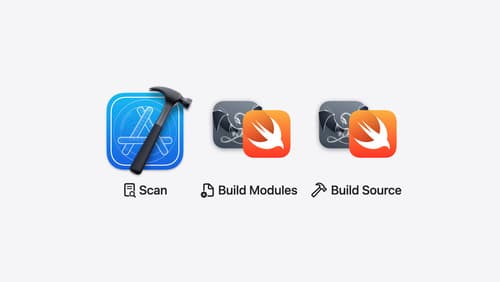uikit
Asked on 2024-08-04
11 searches
UIKit at WWDC 2024
Sessions Mentioned:
- What’s new in UIKit
- Demystify explicitly built modules
- Build multilingual-ready apps
- SwiftUI essentials
- What’s new in SwiftUI
- Platforms State of the Union
Key Updates in UIKit:
-
Automatic Trait Tracking:
- UIKit now supports automatic trait tracking inside common view and view controller update methods such as
layoutSubviewsanddrawRect. This feature automatically performs the associated invalidation for methods when traits change, simplifying the process of handling trait changes. - Example: A
UIViewsubclass can now automatically track changes in the horizontal size class trait without manual registration.
- UIKit now supports automatic trait tracking inside common view and view controller update methods such as
-
Document Launch Experience:
- Redesigned launch experience for document-based apps, providing full control over launch views, design, and support for template document creation.
-
Updated Tabs and Sidebar:
- Major updates to tabs and sidebar, enhancing the user interface and making it more delightful to use.
-
Fluid Transitions:
- Support for new fluid transitions across the system, improving the overall user experience.
-
UIUpdateLink:
- A new feature that allows for better performance and battery efficiency by using advanced features for view updates.
- Example: A view being animated up and down using a
UIUpdateLink.
-
SF Symbols Animations:
- Expanded with new symbol animations, including three new animation presets.
-
Text Improvements:
- Advanced text editing experiences with
UITextView, including writing tools UI by default, inline editing, proofreading, and composition support.
- Advanced text editing experiences with
-
Menu Actions:
- Enhanced support for menu actions in iOS 18, making them more useful for iPhone-only apps and supporting system invocations like UI commands and key commands.
-
Interoperability with SwiftUI:
- UIKit gesture recognizers can now be added directly to SwiftUI hierarchies using the new
UIJsRecognizerRepresentableprotocol. - UIKit and AppKit can now take advantage of SwiftUI animations, allowing for seamless integration and synchronization of animations across frameworks.
- UIKit gesture recognizers can now be added directly to SwiftUI hierarchies using the new
For more detailed information, you can watch the session What’s new in UIKit.

Build multilingual-ready apps
Ensure your app works properly and effectively for multilingual users. Learn best practices for text input, display, search, and formatting. Get details on typing in multiple languages without switching between keyboards. And find out how the latest advances in the String Catalog can make localization even easier.

Demystify explicitly built modules
Explore how builds are changing in Xcode 16 with explicitly built modules. Discover how modules are used to build your code, how explicitly built modules improve transparency in compilation tasks, and how you can optimize your build by sharing modules across targets.

SwiftUI essentials
Join us on a tour of SwiftUI, Apple’s declarative user interface framework. Learn essential concepts for building apps in SwiftUI, like views, state variables, and layout. Discover the breadth of APIs for building fully featured experiences and crafting unique custom components. Whether you’re brand new to SwiftUI or an experienced developer, you’ll learn how to take advantage of what SwiftUI has to offer when building great apps.
